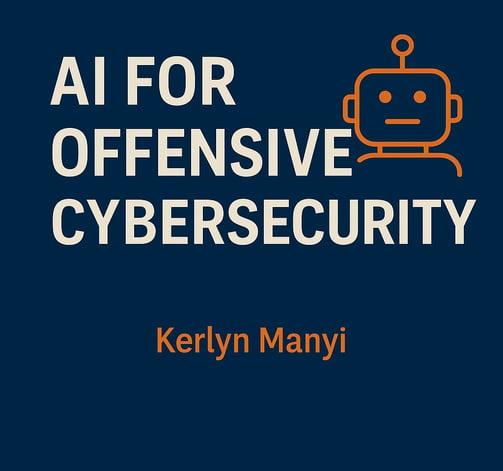Your blogAI for Offensive Cybersecurity: How Red Teamers Are Using AI to Push the Boundaries of Offensive Security post
While AI is often seen as a defensive cybersecurity tool, this blog post explores its growing and more provocative use on the offensive side—specifically by red teams conducting ethical hacking and adversary simulations. It highlights how AI is transforming offensive security by accelerating and enhancing core red team activities.
Kerlyn Manyi
5/19/20253 min read


When most people think of AI in cybersecurity, they picture a helpful tool on the defense side, detecting threats, sorting logs, maybe helping SOC teams breathe easier. But there’s another side to this story, and it’s a lot more uncomfortable: AI is quickly becoming a powerful offensive tool.
We're now entering a phase where AI is becoming a powerful tool for red teams. From automating recon to simulating polymorphic malware, red teamers are experimenting with AI to build smarter, more realistic attack simulations, the kind defenders need to be ready for.
Let’s break down how AI is quietly transforming offensive security in ethical, controlled environments.
1. Smarter, Faster Reconnaissance:
Gathering intel on a target used to take hours, scraping LinkedIn, scouring GitHub, pulling domains, etc. AI now does this at scale.
LLMs (Large Language Models) can scan and summarize thousands of profiles, job posts, and forums in minutes.
They identify internal technologies, team structures, email formats, all from public data.
AI-assisted recon delivers context-aware target profiles, ready for exploitation.
Combine that with code assistants and scrapers, and you’ve got automated recon that’s faster and surprisingly accurate.
This is designed for red teamers who need high-fidelity intelligence before engagement.
2. AI-Enhanced Social Engineering
Phishing is evolving. The sloppy grammar and obvious red flags? They're fading. AI brings scale and realism. With generative AI, red teams can now:
Craft hyper-personalized phishing emails that mimic tone, slang, and communication style.
Use voice synthesis to create deepfake voicemails or simulate executive urgency.
Deploy AI-driven chatbots that can hold real-time phishing conversations and adapt based on responses
These aren’t gimmicks, they’re training tools that challenge human defenses in high-stakes scenarios.
3. AI-Augmented Exploit Research
Red teams are also leveraging AI to ideate and accelerate exploit development:
LLMs assist in spotting common vulnerabilities like logic flaws, injections, or buffer overflows in code.
AI-enhanced fuzzers test inputs more intelligently, increasing the efficiency of discovery.
For known CVEs, models can suggest likely exploit paths and PoC structures.
It’s not about replacing skill, it’s about enhancing it. AI acts as a force multiplier in vulnerability exploration.
4. Polymorphic Malware & Evasion Tactics
Some researchers are using generative AI to create malware that rewrites itself continuously, making it harder for AV or EDR to catch. Others use models to adjust code based on what a sandbox or antivirus is doing, meaning the malware adapts to its environment like a living organism.This kind of polymorphism used to take real skill. Now, AI lowers the barrier to entry.
This is no longer theoretical. Offensive research has already demonstrated AI-generated shellcode variants that beat commercial defenses. (See previous blog post)
5. The Rise of AI-Powered Red Teaming (Experimental)
Imagine giving an LLM access to:
A list of IPs and domains
Basic tools (Nmap, Nikto, Metasploit)
A task: “Gain access and report findings”
Projects like AutoGPT and LangChain are laying the groundwork for semi-autonomous red team agents. While far from perfect, they hint at a future where offensive AI can:
Select tools and commands.
Interpret scan results.
Chain attacks together.
Log and adapt in real time.
Today, red teamers are using these tools in labs. Tomorrow, attackers may be using them live.
The Ethics and Responsibility of Offensive AI
With power comes responsibility. Offensive AI is a double-edged sword:
Red teams can use it to simulate advanced threats and uncover blind spots.
Attackers can use it to scale up social engineering, automate recon, or mutate malware faster than ever.
Security consultancies must walk the line carefully: simulate, educate, and protect, without crossing into real-world harm. Clear rules of engagement, internal testing environments, and a strong ethical framework are essential.
Final Thoughts
AI is changing cybersecurity, not just on the defense, but on the offense too. Whether you’re a red teamer, a CISO, or a business leader, one thing is clear: AI won’t just be part of tomorrow’s attack chain, it will be the brains behind it.
Are you ready to test your defenses against a smarter adversary?
